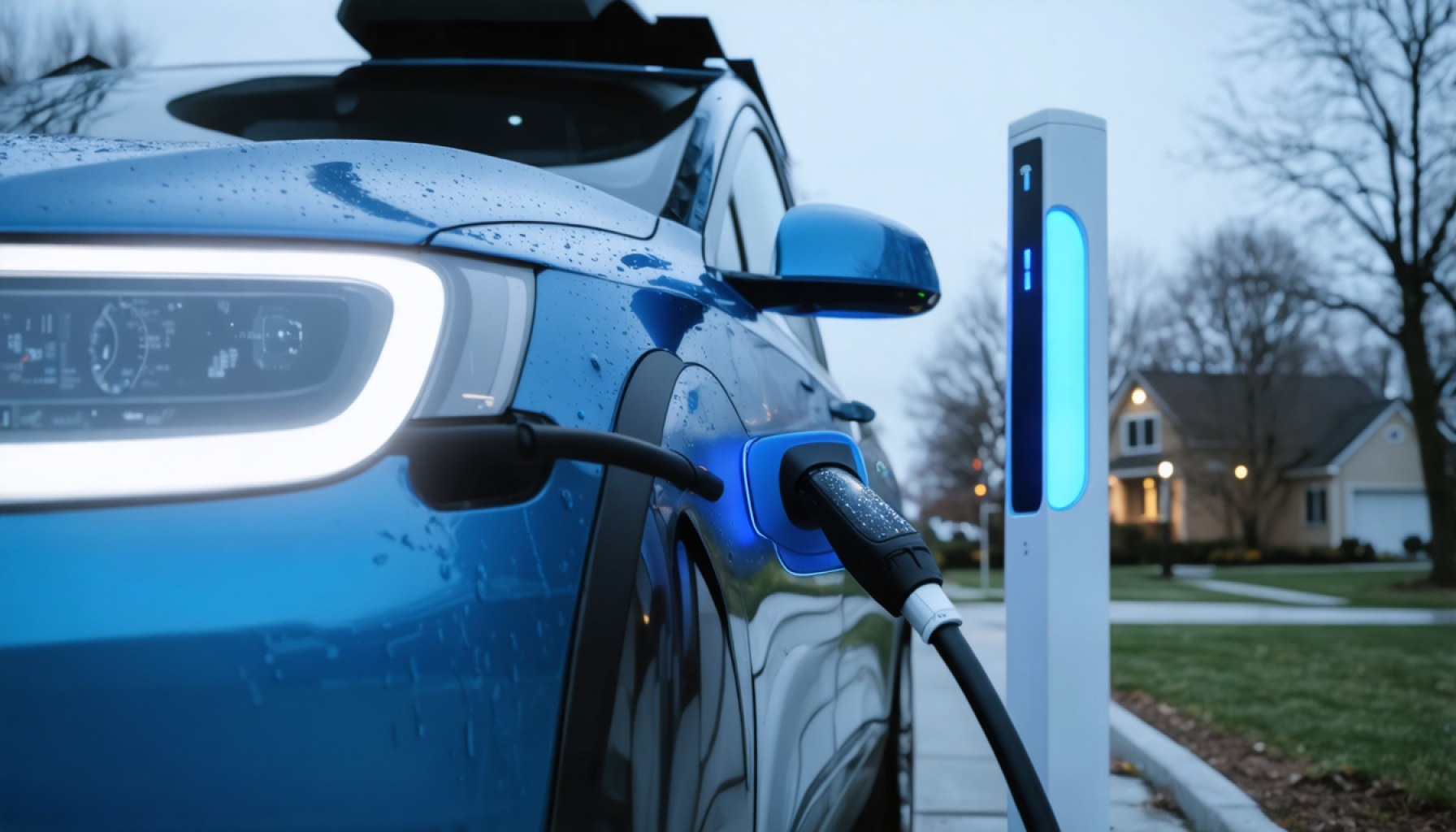- Wisconsin faces challenges in transitioning from gasoline vehicles to electric vehicles (EVs) amid climate concerns.
- The Trump administration’s freeze on federal funding hinders the expansion of EV infrastructure in the state.
- EV adoption in Wisconsin lags, partly due to limited charging infrastructure and political opposition.
- Federal tax credits up to $7,500 encourage EV purchases, but their future is uncertain.
- State Senator Jeff Smith promotes EV use with his electric Chevrolet Equinox, though infrastructure remains sparse.
- Only four fast-charging stations are currently available in Wisconsin, highlighting the need for increased support.
- The state stands at a pivotal moment, balancing environmental needs with political actions to drive change.
Amidst the churning debate between gas guzzlers and electric dreams, change simmers slowly in Wisconsin. The state’s idyllic winters whisper a forewarning, as shorter and warmer days threaten traditions on thin ice. Yet, as whispers of climate urgency spread, the echo of gasoline engines persists, and a crucial lifeline for cleaner roads has been severed at the federal level.
Under the shadow of a recent freeze by the Trump administration, the funds critical for expanding electric vehicle (EV) infrastructure hang in limbo. This decision, rippling through a state already lagging in EV adoption, stirs doubt among enthusiasts and environmentalists alike, anxious over the sputtering growth of cleaner transportation.
Yet, pockets of revolution flicker as state senator Jeff Smith from Eau Claire County embraces his electric Chevrolet Equinox. In an age where the federal tax credit of up to $7,500 still teases potential buyers, whispers of its demise by some Republicans abound, threatening this already flimsy tether to innovation.
At a Kwik Trip in Chippewa Falls, one of the rare fast-charging stations erected with federal support powered Smith’s vehicle. It is one of only four such stations scattered across the state—beacons of progress amidst a landscape yearning for more. But even as Smith smoothly unplugs his fully charged car, one cannot ignore the shrinking reach of this infrastructure, a stark reminder of the political currents steering EV enthusiasm.
Wisconsin waits at a crossroads—between environmental urgencies and political will, hoping whispers can become roars leading to sweeping change on the blacktop horizon.
Is Wisconsin Ready for an Electric Future? The Pros, Cons, and Future of EV Adoption
How-To Steps & Life Hacks for Embracing Electric Vehicles (EVs) in Wisconsin
1. Evaluate Your Driving Needs: Determine your daily driving range and compare it with the capacities of available EV models. For urban and suburban drivers, most EVs provide ample range.
2. Research Charging Options: Identify and map out charging station locations in your area. Websites like PlugShare and ChargePoint can help you find charging stations easily.
3. Incentives and Rebates: Before purchasing, check for federal and state incentives. Currently, federal tax credits can offer savings up to $7,500 depending on the model.
4. Home Charging Setup: Consider installing a Level 2 home charging station for quicker and more convenient charging.
5. Plan for Cold Weather: Wisconsin winters can impact battery performance. Opt for EVs with pre-conditioning features or battery warmers.
Real-World Use Cases
– Urban Commuters: For city dwellers, EVs like the Chevy Bolt or Nissan Leaf provide efficient and greener alternatives with numerous charging stations.
– Short-Distance Travel: For those within a 200-mile round trip, making full use of the current infrastructure shouldn’t pose significant challenges.
– Public Transport Fleets: Consideration for municipal investment in electric public buses or vehicles can jump-start public adoption and infrastructure growth.
Market Forecasts & Industry Trends
Despite political hindrances, the EV market is predicted to grow, with BloombergNEF projecting that EVs will make up 58% of global passenger vehicle sales by 2040. Wisconsin, however, may lag unless state policies pivot towards supporting infrastructure growth more aggressively.
Reviews & Comparisons
– Chevrolet Equinox EV vs. Tesla Model 3: The Equinox is a budget-friendly option but lacks the range and network of charging options that Tesla offers.
– Fast Charging Stations: Compared to California, Wisconsin’s charging infrastructure remains sparse. According to Clean Cities Coalition, a robust, accessible network is essential for broader EV adoption.
Controversies & Limitations
– Political Resistance: Federal funding halts influence state momentum. Bipartisan cooperation is necessary to support infrastructure expansion and incentive programs to encourage adoption.
– Environmental Concerns: Mining for battery materials and electricity sources remain hot topics. However, utilities are increasingly adopting renewable power sources to drive sustainability.
Features, Specs & Pricing
– Chevrolet Equinox EV: Offers a range up to 300 miles on a full charge, with a starting price around $40,000.
– Federal Tax Credit: It’s available, but with potential changes on the horizon, timely purchasing can ensure maximum benefit.
Security & Sustainability
Wisconsin needs resilient energy grids to cope with heightened EV adoption. As renewable energy becomes more prevalent, EVs will pose as lesser environmental burdens.
Insights & Predictions
1. Growth of Charging Stations: With political alignment, anticipate growth in charging station numbers, especially with private partnerships (e.g., collaborations between public funders and tech companies).
2. Adoption Rate Growth: Expect gradual increases as EV models diversify in affordability, size, and features, appealing to wider demographics.
Tutorials & Compatibility
– Charging Chap Tutorial: EV drivers can optimize their charging by following the tutorial to use charging apps, schedule charging times, and join local EV communities.
Pros & Cons Overview
Pros:
– Lower running costs
– Environmental impact reduction
– Potential tax incentives
Cons:
– Limited charging infrastructure
– Higher upfront costs
– Winter range reductions
Actionable Recommendations
1. Stay Updated on Incentives: This can save you thousands on your EV purchase.
2. Plan Your Routes: Use navigation apps that integrate charging stops.
3. Join EV Communities: They provide support, tips, and advocacy information.
In conclusion, while Wisconsin’s EV future faces hurdles, individual efforts combined with policy shifts can transform its roadways. To learn more about clean energy initiatives, visit Energy.gov.














